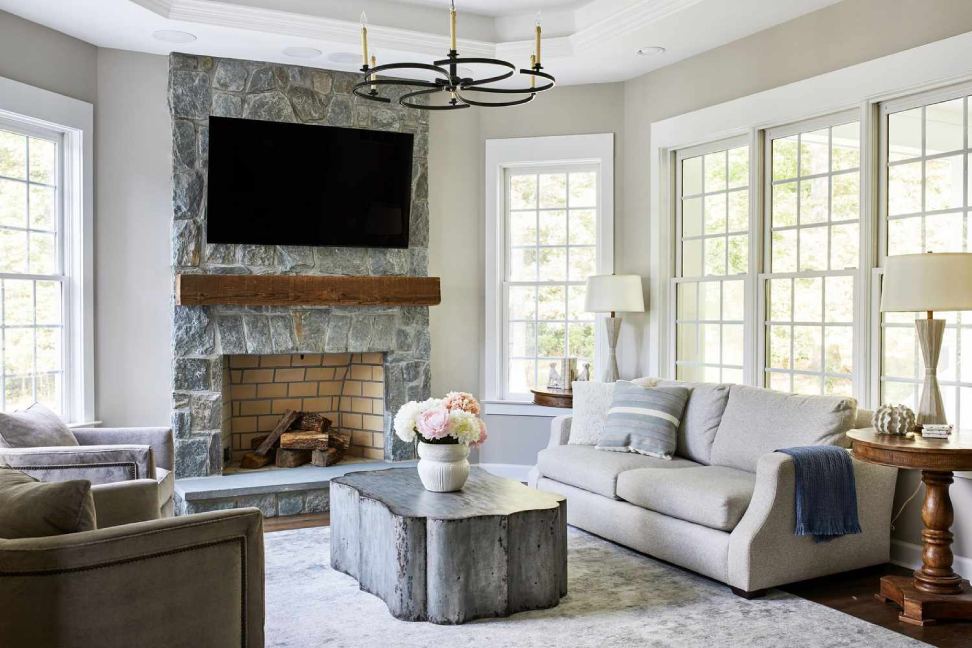The heart of the home is often said to be the kitchen, but in recent years, a new contender has emerged: the keeping room. This charming and functional space is making a comeback in modern home design, offering a unique blend of practicality and comfort. But what exactly is a keeping room, and how can it benefit your home?
A Blast from the Past: The Origins of the Keeping Room
The concept of the keeping room originated in colonial America. Back then, homes lacked central heating, making the kitchen, with its large fireplace, the warmest room in the house. The keeping room, often adjacent to the kitchen, served as a common space for family members and guests to gather, chat, and keep warm while the cook prepared meals.
The Keeping Room Reimagined: A Modern Take on Tradition
While the basic concept of the keeping room remains the same, its modern iteration has evolved to suit contemporary lifestyles. Today’s keeping rooms are typically smaller and more intimate spaces, often found directly off the kitchen. They feature comfortable seating arrangements, inviting atmospheres, and sometimes even fireplaces, creating a cozy and inviting environment.
Beyond Warmth: The Multifaceted Appeal of Keeping Rooms
The appeal of keeping rooms goes beyond their historical roots and aesthetic charm. They offer a multitude of benefits for homeowners, including:
- Enhanced Connection: Keeping rooms foster a sense of connection between the cook and those spending time in the space. Unlike isolated kitchens, keeping rooms allow for conversation and interaction while meals are being prepared, creating a more inclusive and engaging experience.
- Increased Functionality: Keeping rooms can serve a variety of purposes beyond just a waiting area. They can be transformed into reading nooks, homework stations, casual dining areas, or even small home offices. This versatility makes them ideal for families with diverse needs.
- Improved Traffic Flow: Keeping rooms, often situated between the kitchen and other living areas, can help create a more open and flowing floor plan. This design promotes easier movement and interaction within the home.
- Added Value: Keeping rooms are becoming increasingly popular with homebuyers, potentially adding value to your property.
Designing Your Dream Keeping Room: Tips and Considerations
If you’re considering incorporating a keeping room into your home, here are some key points to keep in mind:
- Size and Location: Keeping rooms are typically smaller than family rooms, often ranging from 100 to 200 square feet. Ideally, they should be located adjacent to the kitchen for easy access and connection.
- Seating and Ambiance: Create a welcoming atmosphere with comfortable seating arrangements, soft lighting, and warm colors. Consider incorporating a fireplace, built-in bookshelves, or a cozy rug to enhance the space’s inviting feel.
- Functionality: Think about how you plan to use the keeping room and design it accordingly. If you need a dedicated workspace, incorporate a desk or built-in cabinetry. For a more relaxed atmosphere, prioritize comfortable seating and a coffee table.
- Style and Integration: Ensure your keeping room seamlessly blends with the overall style of your home. Use similar materials, colors, and finishes to create a cohesive feel throughout the living area.
In Conclusion: Keeping the Tradition Alive
The keeping room offers a unique blend of history, functionality, and charm, making it a valuable addition to any modern home. Whether you’re seeking a space to connect with loved ones, enhance your home’s functionality, or simply create a cozy retreat, the keeping room can provide the perfect solution. So, consider incorporating this timeless concept into your home and experience the joy of connection and conversation in this special space.

